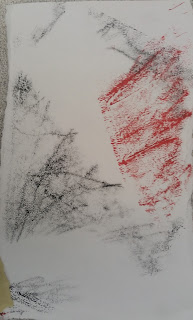Conceptual Art
Conceptual artwork is the movement that prefers ideas over
the finished products. Conceptual arts uses mostly words in an expressive way
to create imagery, as well as objects and everyday objects as a canvas. E.g
Mary Kelly uses dirty nappies from her new-born child as a canvas for one of
her works.
Conceptual art requires the viewer to think and analyse the
works to figure out the deeper meaning to them. It also confuses the reason
when given a name that is usually irrelevant to the object used. Because of
this, the idea much be original and not familiar from any other piece, with a
meaning to the piece when the viewer digs deeper.
Conceptual art began in the early 20th century by Marcel
Duchamp. He began using different types of objects in his work. For example, a
wheel, a stool and even a urinal which he titled ‘fountain’ and became one of
his most known works in 1917. Piero Manzoni was another popular artist at the
time, blowing up a balloon and attaching it to a string and titling the work
‘artist’s breath’.
There’s different types of conceptual art. One of these
types are called performance art. For example, Marina Abramovic was a
performance artist whose most recognizable artworks were ‘Rhythm 0’, where she
stood with 42 objects (including a bullet and gun) and allowed the audience to
do whatever they liked to her. Others have used words to create an impact on
those around them. For example, Robert Montgomery, who used the quote ‘the people you love become ghosts inside of
you and like this you keep them alive.’

Some just use regular objects or minimalist pieces of
work that creates a meaning with the odd and meaningful titles. Finally, there
are people who use themselves as a piece of art and take photographs. For
example, Bruce McLean used himself as a self-portrait in some of his notable
work like plinth.















